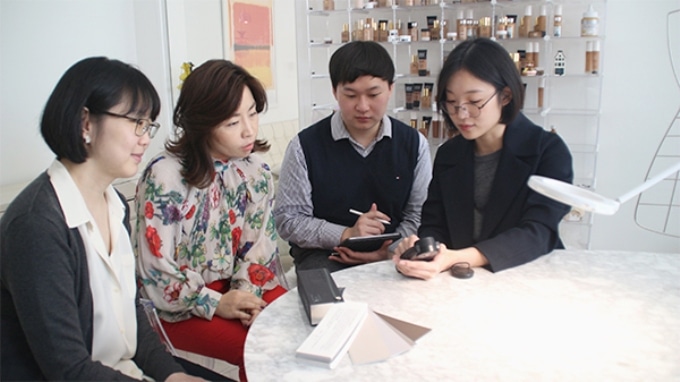Mar 7 2019
There is a solution for people struggling to be alert in the mornings. A research team at KAIST has suggested that a blue-enriched LED light can productively help people overcome morning drowsiness. This study will offer the foundation for major changes in future lighting strategies and thus help fashion better indoor environments.
 (from left: Professor Hyun Jung Chung, Professor Hyeon-Jeong Suk, Taesu Kim, and Professor Kyungah Choi) (Image credit: KAIST)
(from left: Professor Hyun Jung Chung, Professor Hyeon-Jeong Suk, Taesu Kim, and Professor Kyungah Choi) (Image credit: KAIST)
Substantial research has been dedicated to revealing circadian rhythms. The 2017 Nobel Prize in Physiology or Medicine was awarded to Jeffrey C. Hall, Michael Rosbash, and Michael W. Young for exposing the molecular mechanisms that regulate circadian rhythms. Specifically, the association between light and its physiological effects has been explored since the finding of a unique, third type of photoreceptor in the human retina in the early 2000s. Rods and cones control visual effects, while the third type, photosensitive retinal ganglion cells, regulate a large range of behavioral and biological processes such as alertness, melatonin and cortisol secretion, and functional magnetic resonance imaging (fMRI).
Preliminary studies on light sources have revealed that blue monochromatic, completely saturated lights are effective for motivating physiological responses, but the comparative efficacy of commercially available white light sources is less well comprehended. Furthermore, the research was paid more attention to the negative effects of blue light; for example, when people are in blue light environments at night, they have difficulty realizing deep sleep as the light restrains melatonin secretion.
However, Professor Hyeon-Jeong Suk and Professor Kyungah Choi from the Department of Industrial Design and their team debate that the effects of blue-enriched morning light on physiological reactions are time reliant, and that it has helpful effects on melatonin levels and the subjective perception of mood, alertness, and visual comfort compared with warm white light.
The team carried out an experiment with 15 university students. They examined whether an hour of morning light exposure with varying chromaticity would impact their physiological and subjective responses in a different way. The fall of melatonin levels was considerably greater after the exposure to blue-enriched white light in contrast to warm white light.
Light takes a huge part of our lives since we spend most of our time indoors. Light is one of the most powerful tools to affect changes in how we perceive and experience the environment around us.
Hyeon-Jeong Suk, Professor, Department of Industrial Design, KAIST.
When we investigate all of the psychological and physiological effects of light, we see there is much more to light than just efficient quantities. I believe that human-centric lighting strategies could be applied to a variety of environments, including residential areas, learning environments, and working spaces to improve our everyday lives.
Kyungah Choi, Professor, Department of Industrial Design, KAIST.
This study was conducted along with Professor Hyun Jung Chung from the Graduate School of Nanoscience and Technology and the paper was published in Scientific Reports (10.1038/s41598-018-36791-5) on January 23rd, 2019.